In Vejbystrand, in south-western Sweden, Jeppe Appelin has taken the bold step of introducing black grape varieties on his farm. “We started 15 years ago, after visiting Danish vineyards. People have been telling us for years that you can’t make red wine in Sweden. But now we produce wine that ages well.”
Like most Swedish estates, Mr Appelin’s is modest in size: It is only one hectare, and is located on the southern coast of the Bjäre peninsula. For Mr Appelin, as for many of his colleagues, the development of winegrowing in this Scandinavian country is pioneering work. On the land available to him, the winemaker is constantly experimenting and borrowing from other winemaking traditions, with a view to “push the limits of what is feasible in our climate”.
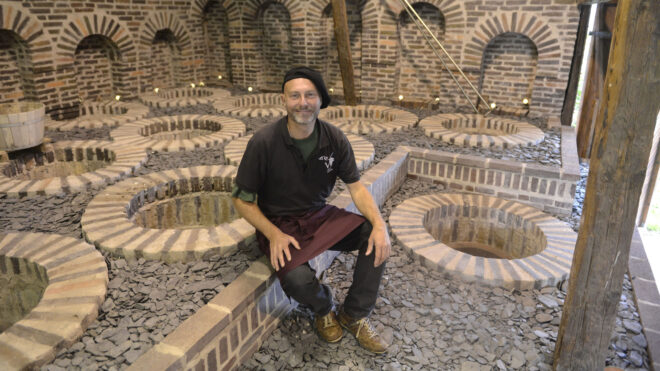
Jeppe Appelin uses the Georgian Qvevris clay pot for his wines for three years.
He found inspiration in ancient Georgian methods and installed 20 1,000-litre clay “qvevris” in his winery. Without the addition of yeast, some of the grapes (including skins and stems) are fermented there, generally for several months. A long process, but one that gives the product body and roundness. The rest are fermented in steel, concrete or oak vats, a process which sees Mr Appelin working with 25 different yeast strains.
A helping hand for the soil
In an attempt to develop a ‘terroir’, the farmer added diabase, granite, gneiss, sandstone and porphyry, from a mine site near the farm, to the sandy clay soil. “These stones not only add a very interesting mineral complexity to the wine, they also raise the soil temperature and improve drainage.” The roots of the vines, planted 15 years ago, now reach the shallow groundwater and irrigation is unnecessary.
When it comes to maturing the wine, Mr Appelin is experimenting with the Solera method, common in Spain and Portugal. This technique consists of stacking several tiers of barrels, with the oldest wine in the bottom row, and decanting some of the contents of a tier into the one below several times a year as part of the bottom tier is bottled. This makes the wines more complex, with the remaining older contents of a barrel “educating” the incoming younger wines.
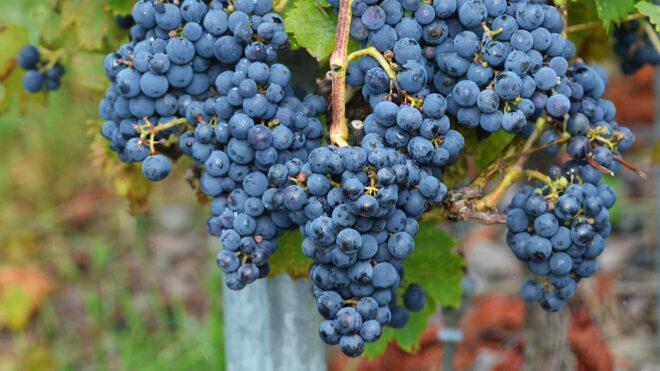
Although blue grapes are more labor-intensive, they cope well with the Scandinavian climate, as Jeppe Appelin has proven on Vejby Vingård.
State monopoly
The main challenge remains marketing. In Sweden, the state-owned “Systembolateg” has a monopoly on the retail marketing of alcoholic products; one of the aims being to regulate the consumption of alcohol. As a result, Mr Appelin currently has only three sales channels for his wine: State-run shops, restaurants and consumption on the estate.
None of the three really fit the bill. “Our wine is too expensive for the state-run shops” (which tax the products heavily). “Restaurants are still reluctant to offer Swedish wines on their menus. And I don’t want to make beds in order to sell a bottle of wine. I want to make wine,” he argues passionately. At present, his only outlet is for groups who attend his tastings. In other words, he is impatiently awaiting the announced revision of the law on alcohol, which could allow him to sell his bottles on the estate within a year or two.
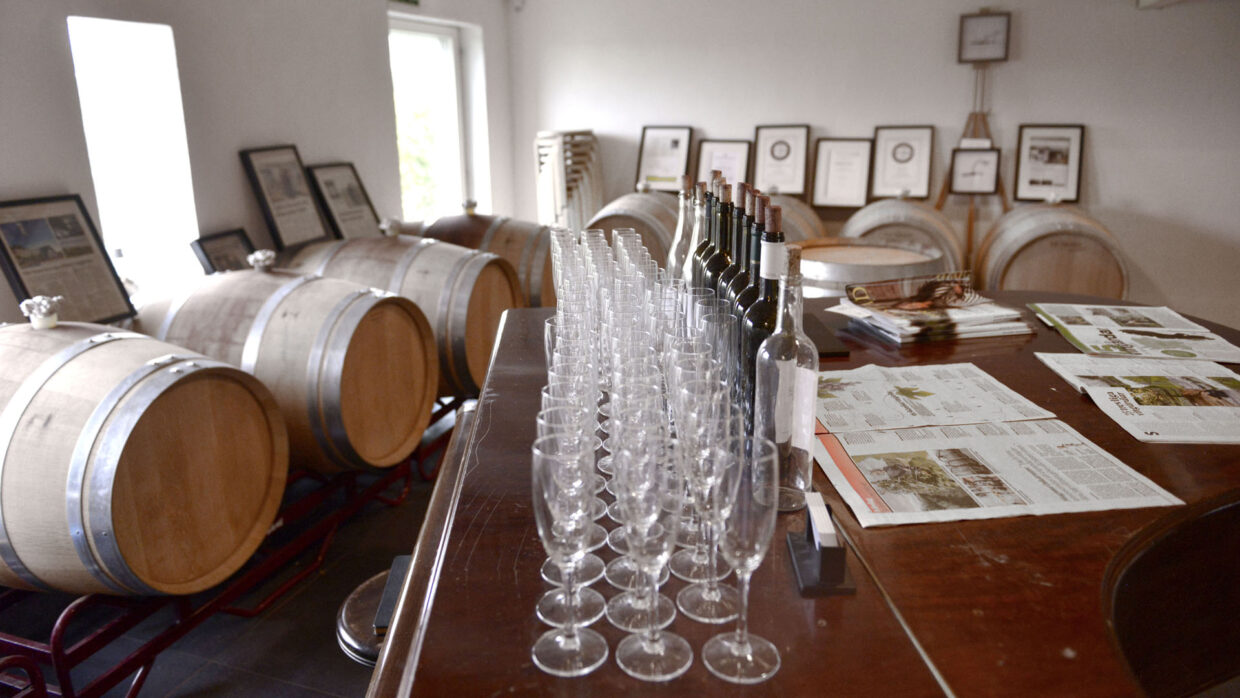
At the moment, wine tastings are Appelin’s only marketing option.
On the Northern Trail
In Väderstad, near the northern edge of the Swedish vineyards, Niclas Albinsson turned to winemaking 10 years ago. On his estate in Särtshöga, he farms two hectares and produces 10,000 bottles of sparkling white wine per year. He has planted 8,000 Solaris vines, a white PIWI grape variety (resistant to fungal diseases) developed in Germany by the Weinbauinstitut in Freiburg, which produces excellent results in Scandinavia.
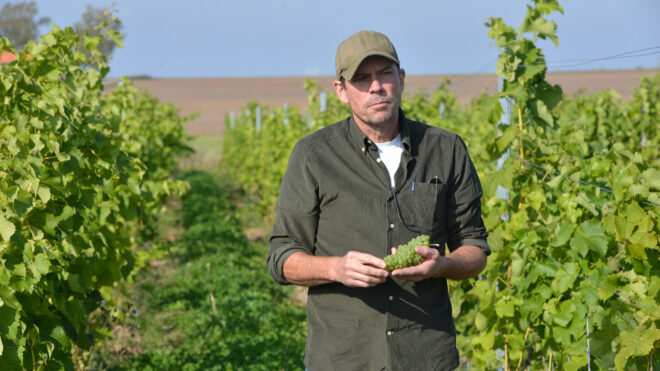
In Särtshöga Vingård, Niclas Albinsson only grows the green Solaris grape variety and has now introduced a Swedish quality label with other winemakers based on the French champagne method.
“I think that in Sweden we should focus on producing high-quality white wines from grapes that can withstand our climate,” he says. The estate, nestled between a lake and a mountain, enjoys rather mild weather conditions, with an average temperature of over 10°C. “With Pierre-Yves Bournerias from the Institut Œnologique de Champagne, we found that the temperatures, sunshine and rainfall were almost the same as in Champagne.”
Mr Albinsson himself is working according to the traditional method of champagne production. Half the harvest is destined for a cuvée (blended wine) and 40% for aging in oak barrels. The wine is stirred after the first fermentation: “It helps me to protect the wine from oxidation and bacteria, to manage the polyphenols, and to give it a full-bodied flavour.” The production period of a cuvée is three and a half years. “We want to reveal the complexity of the vine’s aromas, not to make a sweet wine, but rather a fresh one, and that takes time.”
Moving towards a quality label
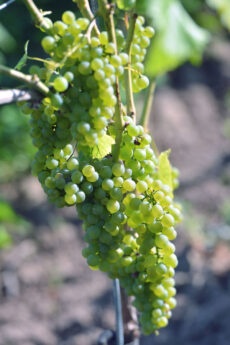
Solaris dominates Swedish viticulture. White sparkling wines as well as still wines are made from this grape variety.
With the aim of gaining a foothold in the international market, Mr Albinsson has collaborated in establishing an appellation-type standard for Solaris sparkling wine producers; the Swedish Sparkling Wine Association, with specifications largely inspired by the traditional method. “A label like this is a guarantee for consumers,” he says.
As for the financial and time commitment, the winemaker had to develop a restaurant and bed and breakfast activity in order to acquire a licence to sell alcohol. “It’s a choice that takes up a lot of our time,” he concedes. Of course, this diversification has had a very positive economic impact. “We have a turnover of about SEK 5 million (£420,000) from our small piece of land.” By way of comparison, he explains, “to achieve the same economic result in cereal production, you would need hundreds of hectares. “
Warming as a long-term benefit
However, he is also calling for a relaxation of the regulations governing sales. “I don’t want to sell my wine in supermarkets. Instead, I want to open a point of sale on the estate and develop hospitality and wine tourism just like in France, Nappa Valley in the United States, and other wine countries. This would mean a lot to the rural economy.”
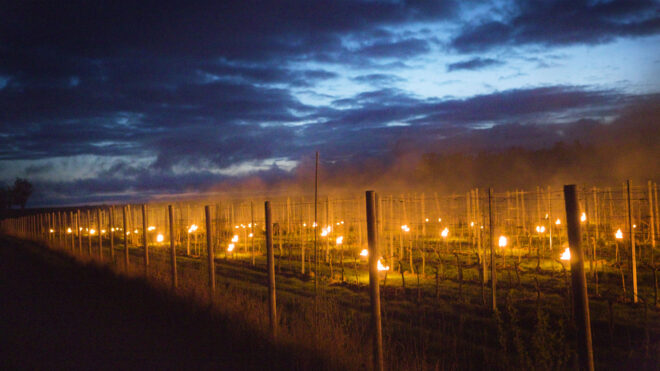
In spring, the Swedish winemakers protect their grapes by lighting small fires in the vineyard to raise the temperature during frost nights. Photo: Niclas Albinsson
While waiting for the legislator’s decision, Swedish winemakers continue to grow in number and their wine in quality. This is not due to climate change, but to careful grape selection, breeding and cultivation, says Mr Albinsson. “It’s not like it’s 15 degrees warmer here. This is all linked to the fact that we now have grape varieties that are better adapted to our climate.”
The fact remains that the increase in average temperatures could, in the long term, contribute to the shift of part of the European wine-growing area towards more northerly regions, notably because of excessively high sugar levels in the South of the continent. “Many investors are looking towards northern Europe, including southern Scandinavia,” suggests Mr Albinsson.
Still a small and select niche
The wine-growing area of this Scandinavian country is still something of a well-kept secret, comprising 125ha and a handful of farms. Most estates are one to two hectares, and the largest about 20. The total land area has nevertheless been increasing rapidly in recent years. But only 50 estates have currently put their wine on the market.
The grapes reach maturity in about 100 days, with flowering in April and harvesting in late September or early October. Solaris is the most commonly grown grape variety. Yields are about 1kg/vine, which gives about 3,000kg/ha of grapes.
